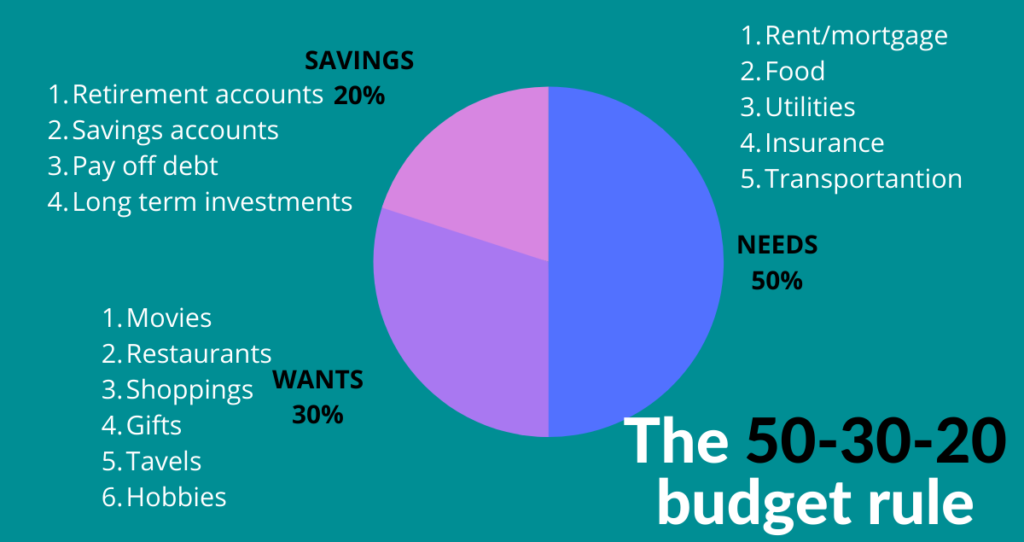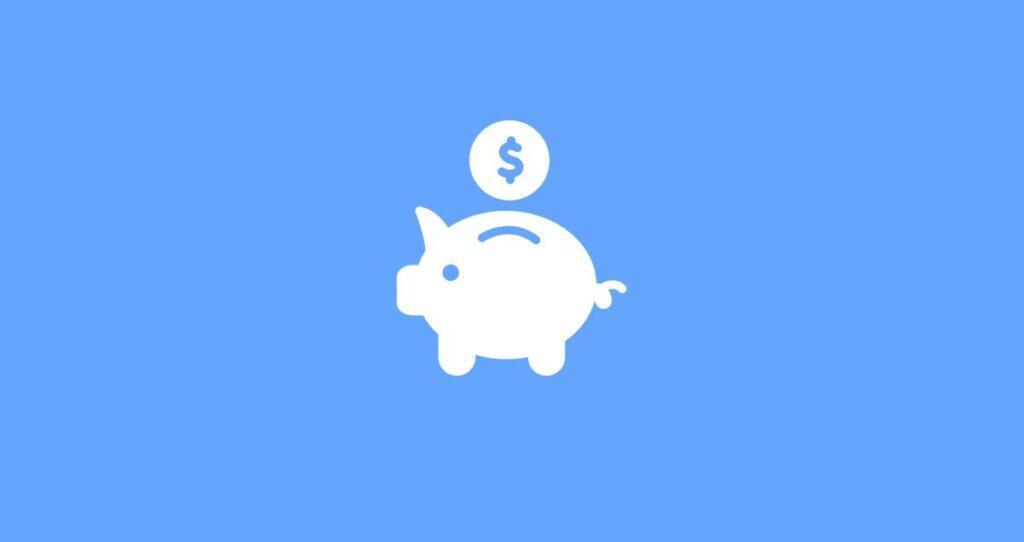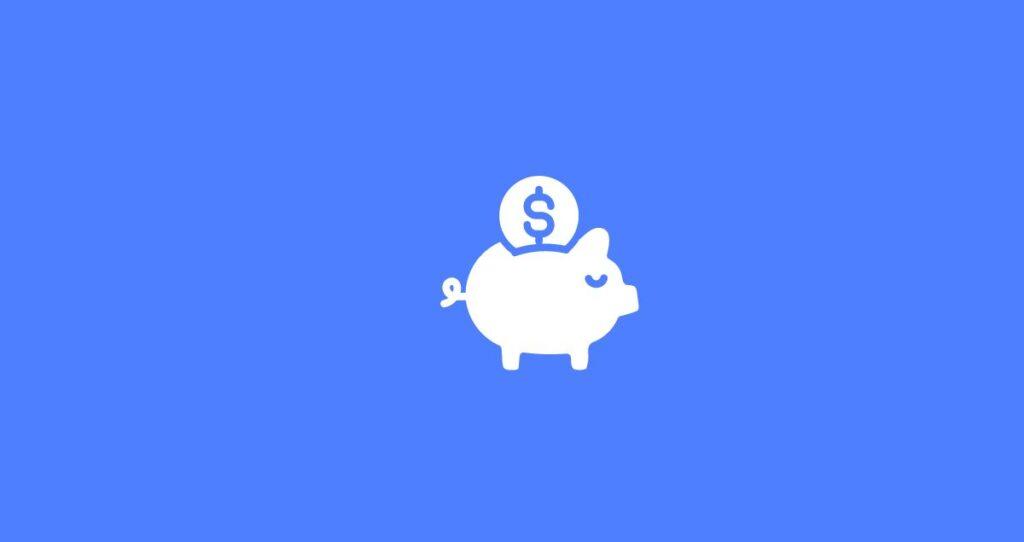Budgeting is one of those terms thrown around by millions of people, but only a few master it. I consider budgeting one of the most important habits you need to manage your finances properly, build wealth, and achieve financial independence.
You can’t invest money you did not save. At the same time, you cannot maximize your savings without a carefully crafted budget. More importantly, reducing expenses only works when you have a budget. For these reasons, you must start budgeting your money immediately.
This article provides practical examples to help you understand how budgeting works if you are new to budgeting or want to improve your financial situation.
So, what is budgeting?
Budgeting is planning how you will spend your money every month by writing down all your income, expenses, and savings. This way, you can tell where you are spending more money than you should or where to cut when necessary to save extra cash.
You can write your budget on paper, create it using software such as Excel, or use a budgeting app such as YNAB, Goodbudget, EveryDollar, Honeydue, etc. It all depends on your preferences and access to these tools.
This article is designed to show you how budgeting works and how to create a budget step by step. The steps in this article are easy to understand with practical examples. Feel free to use the sample budgets in this article as your reference.
1. Understand two types of budgets
According to Investopedia, there are two types of budget from a business standpoint.
(1) Static budget: A static budget stays the same for the entire duration. It is designed to assess the effectiveness of business budgeting processes. Being static means it does not change regardless of business operations and sales.
(2)Flexible budget: A flexible budget changes over time and follows the company’s sales, production, or external factors. It is designed to provide a deep understanding of business operations.
These two budget types help businesses perform effectively and improve their processes.
A flexible budget can also help individuals manage and adjust their finances daily. The budget format you create for your finances will be flexible as you make changes that align with your financial goals. That said, the purpose of creating a budget is to save money, so keep that in mind as you create your first budget or adjust the existing one.
2. Know the main parts of a budget and how to create a budget
The purpose of a budget is to help you save money by understanding your income and how to spend the money you make effectively. A budget enables you to make educated financial decisions and increase your savings.
Many people do not bother creating budgets, which makes it hard for them to manage their finances. Since you are reading this article, I guess you want to know how to stand out from the crowd, and I am here to help you with that.
Budgeting is not complicated, but it can be if you do not approach it correctly. Knowing what a budget is made of is your first step.
The following are the main parts of a budget.
- Income
- Expenses
- Savings
Each budget should include these three parts: you need to know how much you are making, how it is being spent, and finally, how much you are saving.
We will expand these parts further and build a budget from scratch.
Income
Your income is the sum of all your income. Many people have one income from their 9-5 jobs. However, others have multiple incomes from different sources. As you create your budget, you will need to list all incomes you have in order and then calculate their total income by adding them.
Common income sources most people have
- Investments
- Gifts
- Allowances
- Wages
- Salaries
- Commission
- Interest (earned from holding income-generating assets such as dividend CDs and bonds)
- Dividends(earned from dividend stocks)
- Income from selling products such as clothes, digital products
- Royalties: This is paid to you when people use your inventions
You probably don’t have all these incomes. Not everyone has made inventions or has a ton of free money that they lend to clients and earn interest in return.
Whatever you have is ok. Even if you have just one income from your job, it will still work.
Tips: Never use your gross income when making a budget. Only use your net income.
Your gross income includes money that is not yours, such as taxes and other deductions. For this reason, using gross income will lead to false assumptions and wrong calculations. In the end, you will end up with an unrealistic budget or an impractical one.
Let’s create a budget using the incomes we listed above.
To put our incomes in a budget, we will start with two columns: the first column contains the incomes’ names, and the other contains each income value. We are assuming that our client has all the incomes described above. At the bottom of the table, we will calculate the total net income, the sum of all the incomes listed.
If you have only one income, the same income will become your total income. Make sure to use your net income.
Here comes the start of our budget.
| Income (monthly) | Dollar value(net value) |
| Wages | $1,000 |
| Salaries | $3,000 |
| Allowances | $500 |
| Investments | $400 |
| Commission | $200 |
| Interest | $100 |
| Royalties | $50 |
| Income from selling products | $200 |
| Gifts | $50 |
| TOTAL NET INCOME | $5,500 |
If you don’t have all these incomes, use what you have. If you only have income from your salary, your total income will become the net income from your salary.
From the table above, you can see that we have listed all our client’s incomes and their equivalent values. We also calculated the total net income, which is the sum of all these incomes, and we ended up with $5,500. So, our client is earning $5,500 per month.
Our next step is to calculate how much this person spends and compare it with the total income. So, let’s move to the next step.
Expenses
The expenses section is an important part of your budget. By expenses, I mean anything that costs you money or takes money out of your pocket.
For example, your monthly TV subscription is an expense. Expenses differ from person to person. However, some expenses are common for almost every person. A good example is food expenses. Everyone eats. So, you will put down how much you spend on food.
Your budgeting practices should include all expenses, whether big or small. Without including every expense, your budget will be incomplete. Some say they don’t have to budget for the small drinks they get from vending machines. The truth is that those little expenses cost you a lot of money if they are repeated. For example, a simple $3 drink from a vending machine can cost as much as $1095 annually if taken daily.
Common expenses that many people have
- Mortgage
- Rent
- Health insurance
- Food expenses (grocery shopping, dining out, food giveaways, etc.)
- Car expenses (gas, insurance, maintenance, loan payments, interest, etc)
- Cell phone expenses (data, minutes, app subscriptions)
- Shoppings-related costs (clothes, shoes, and related items)
- Entertainment (movie subscriptions, streaming services, apps, newspaper subscriptions, video games, etc.)
- Internet/TV
- Student loans
- Miscellaneous
It is possible that you don’t have all these expenses or have more. For example, some people will not have student loans but have college-related expenses such as tuition, books, etc.
In addition, it is not possible to rent and get a mortgage simultaneously unless you are an investor. Again, these expenses will differ from one person to another. So, go ahead and list the expenses you have in the following budget. So far, our budget has two collum for income types and their values. We will add two more columns listing all expenses and how much the expense is.
Tip: List every expense you have, no matter how small they are
Our client has different expenses. Yours (your expenses) might be different depending on your lifestyle. After listing our client’s expenses, we will calculate the total monthly expense just like we did with the net income. The difference between your total income and total expenses will be your savings.
Income and expenses in a budget
| Income/mo | Dollar value | Expenses/mo | Dollar value |
| Wages | $1,000 | Mortgage | $0 |
| Salaries | $3,000 | Rent | $2,500 |
| Allowances | $500 | Food | $500 |
| Investments | $400 | Car | $600 |
| Commission | $200 | Cellphone | $100 |
| Interest | $100 | Shopping | $500 |
| Royalties | $50 | Entertainment | $200 |
| Sales | $200 | Internet/tv | $150 |
| Gifts | $50 | Student loans | $150 |
| TOTAL INCOME | $5,500 | Medical | $300 |
| TOTAL EXPENSES | $5,000 | ||
| INCOME – EXPENSES = $500 |
How to interpret a personal budget?
Yes, you can list numbers in a budget. But how do you make sense of it? What does a budget tell you? You can either save money, have zero savings, or lose money. Let’s use our example sample budget to answer these questions. The purpose of creating a personal budget is to save money.
Different living styles based on your savings.
- Living below your means. You are living below your means when you can save money each month. In other words, you fulfill your expenses and have money left for your financial savings goals. This means the difference between your total income and expenses should be positive.
- Living within your means. You live within your means when you can at least cover all your expenses without using loans. In other words, you are living paycheck to paycheck, and a simple financial setback such as a job loss or expensive medical bill can wipe you out. This means the difference between your total income and expenses should be zero or higher.
- Living above your means. You live above your means when you spend more than your monthly earnings. This lifestyle leads to long-term financial stress, as you must borrow more money and max out your credit cards to meet your monthly expenses. When the difference between your total income and expenses on your budget is negative, you know you are living above your means.
So, where does our client stand? Is our client living below, above, or within her means?
So far, we know our client makes $5,500 and spends $5,000. The difference between the total income and expenses is $500, a positive number. So, our client is saving $500 and living below her means since $500 is a positive number. This savings rate translates to a $6,000 yearly saving.
Use your budget to increase your savings.
Even if our client is saving money, the primary purpose of this budget is not to illustrate how much she makes and where it is spent. Instead, we want to use a budget to help her cut expenses and increase his savings. It is now time to look into her expenses column and reduce some of those expenses.
The best way to reduce expenses is to eliminate your wants and find a way to minimize how much you spend on needs.
If you look at the table depicted above, entertainment, shopping, and TV can be classified as wants. You can either eliminate all of them or minimize how much you spend on them. For example, we can eliminate TV services and keep the internet. In this case, the TV portion will go to her savings.
We can also reduce our client’s spending on her needs. For example, instead of paying $2,500 on rental expenses, she can move in with a $1,500 monthly rent. She can achieve this saving goal by staying in the same house but getting a roommate to split the rent or moving to a cheaper home.
How to save money through budgeting?
A complete budget should include saving strategies to help you make decisions that align with your financial goals. We need to add the following sections to our budget to help our clients save more money.
- Target expense: The highest amount our client should spend on each expense in her budget
- Actual expense: What she spent at the end of the month
- Difference: Difference between the target expense and actual expense for each item. This will show us whether we are over or meeting our budget requirements.
So, let us continue to develop our budget and see how we can cut expenses.
| Income | Value | Expenses | value | Target expenses | Actual expenses | Difference | Savings |
| Wages | $1,000 | Mortgage | $0 | $0 | $0 | 0 | $0 |
| Salaries | $3,000 | Rent | $2,500 | $1,500 | $1,600 | $100 | $900 |
| Allowances | $500 | Food | $500 | $300 | $300 | $0 | $200 |
| Investing | $400 | Car | $600 | $400 | $450 | $50 | $150 |
| Commission | $200 | Cellphone | $100 | $70 | $70 | $0 | $30 |
| Interest | $100 | Shopping | $500 | $200 | $250 | $50 | $250 |
| Royalties | $50 | Entertain | $200 | $100 | $100 | $0 | $100 |
| sales | $200 | Internet | $150 | $50 | $50 | $0 | $100 |
| Gifts | $50 | loans | $150 | $300 | $300 | $0 | -$150 |
| TOTAL INCOME | $5,500 | Medical | $300 | $300 | $300 | $0 | $0 |
| TOTAL | $5,000 | Total savings= $1,580 | |||||
| INCOME – EXPENSES | $500 | Target-Actual=> | $200 |
What can we learn from the completed budget above?
Let’s examine our budget more closely. By now, it may seem a bit complicated to an untrained eye. The funny thing is that we did not add complicated numbers or hard calculations.
We decided to increase our client’s savings by reducing expenses. To do so, we needed to have target expenses and evaluate how much our client spent at the end of the month.
Unless our client increased her income, the only way to boost her savings was to reduce her expenses.
That is where target expenses and actual expenses come into play. The idea is that some of her costs could be trimmed down, which is what we did. The target expenses represent the maximum amount we want to spend on each item. The actual expense represents what was spent on each item at the end of the month.
The difference between these two numbers shows us whether we met or missed our saving goal.
The savings column compiles the difference between what she used to spend and actual expenses. For example, her previous rent was $2,500, but she decided to move into a new house and ended up paying $1,600. This turned into a $900 savings on rent alone.
In addition, she decided to increase her student loan payments from $150 to $300, so we ended up with $150 over her usual payment.
Every budget you create should follow this blueprint. If you don’t like the above budgeting format, use the budget in the following table.
Another useful budgeting format
If the above format is not practical, consider using the following one. They all display the same information in a different style.
| Income (monthly) | Dollar value(net value) | ||||
| Wages | $1,000 | ||||
| Salaries | $3,000 | ||||
| Allowances | $500 | ||||
| Investments | $400 | ||||
| Commission | $200 | ||||
| Interest | $100 | ||||
| Royalties | $50 | ||||
| Income from selling products | $200 | ||||
| Gifts | $50 | ||||
| TOTAL INCOME | $5,500 | ||||
| Expenses | Dollar value | Target Expenses | Actual Expenses | Difference | Savings |
| Mortgage | $0 | $0 | $0 | $0 | $0 |
| Rent | $2,500 | $1,500 | $1,600 | -$100(over) | $900 |
| Food | $500 | $300 | $300 | $0 | $200 |
| Car | $600 | $400 | $450 | -$50(over) | $150 |
| Cellphone | $100 | $70 | $70 | $0 | $30 |
| Shopping | $500 | $200 | $250 | -$50(over) | $250 |
| Entertainment | $200 | $100 | $100 | $0 | $100 |
| Internet/tv | $150 | $50 | $50 | $0 | $100 |
| Student loans | $150 | $300 | $300 | $0 | -$150 |
| Medical | $300 | $300 | $300 | $0 | $0 |
| TOTAL EXPENSES | $5,000 | TOTAL: $3,220 | TOTAL: $3,420 | $200 (over) | Total savings = $1,580 |
3. Creating micro budgets
Sometimes, you will need to create small budgets within a budget. I call these small budgets micro budgets. For example, you can create a travel budget if you are a frequent traveler. You will not need to worry about listing all your income in this budget since you have them in your main budget.
Instead, you must list all expenses you will encounter during your travel and use them as a savings goal in your main budget. For example, if our client needs $5,000 to travel, she will need 3.5 months of savings.
Let’s create a micro-budget for our client’s travel, illustrating how she will spend $5,000.
| Items | Dollar value |
| Lodging | $100/night = $1,000 |
| Flight ticket | $1,500 (round trip) |
| Entertainment | $500 |
| Food | $500 |
| Transportation | $500 |
| Others (Souvenirs, other expenses, or savings) | $1,000 |
In this case, her goal is to ensure that she does not spend more than is listed in this travel budget. Remember that the money she spends in this micro-budget must be listed in the expenses section of the central budget.
To make it easy for you and avoid messing up your budget, start saving ahead of time for major expenses like this travel.
4. Budgeting mistakes to avoid
Many people underestimate budgeting and assume that it is not that important. Others overcomplicate their budgeting styles, which makes it difficult to follow the numbers they write in their budgets.
Budgeting goes beyond writing numbers on paper or in budgeting software. Without proper budgeting, you will find yourself among millions of people who create budgets and fail to follow them. According to PRNewswire, 33% of people cannot maintain their budgets. This is a massive percentage, given the importance of budgeting.
Why do many people fail to follow their budget?
Many people fail to sustain their budgets for many reasons. The following are common budgeting mistakes to avoid when creating a practical budget and increasing the odds of success.
- Creating a strict budget: Your budget’s purpose is not to deprive you of things you love or need. Instead, it is there to help you manage and spend your money wisely. However, a strict budget could be challenging and increase your chance of failing.
- Creating a budget using a gross income: A gross income contains tax and other deductibles. Because of this reason, a budget you create with gross income will not meet the reality. Always use your net income.
- Not being serious about your budget: There are two essential steps to budgeting. The first step is to make a budget, and the second is to follow it. It is always easy to create a budget. However, it is hard to follow it and respect it. You must be serious about your budgeting practices and never leave anything to chance.
- Creating an unrealistic budget: Your budget should be meaningful and realistic. You can’t just say that you will cut expenses by 70% without numbers supporting this goal.
- Not budgeting every expense: Many people make the biggest mistake by ignoring small expenses such as a drink from a vending machine. No expense is too small, and small expenses add up to big numbers once repeated many times.
- Not budgeting at all: If your life involves money, you should always have a budget to help you manage it. Without a budget, you are prone to overspending, impulse purchases, and lack of savings.
- Forgetting to update your budget: You must update your budget occasionally to reflect new changes in your life.









